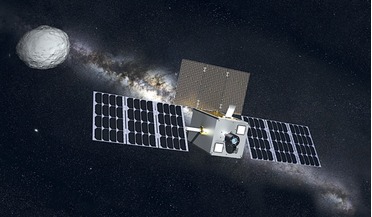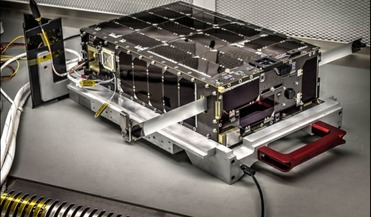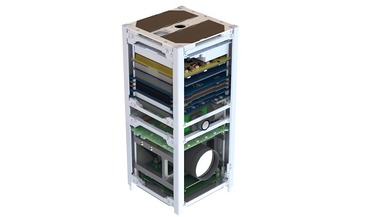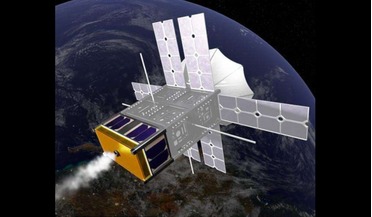 April 2018
Future Cubesat swarms pose significant communications challenges
April 2018
Future Cubesat swarms pose significant communications challenges
... Market Forecast (see p45). According to data tracked between 2009-2016, 42 percent of produced nano/microsatellites (including CubeSats) were in the ‘Technology’ category but this shrinks to 14 percent in the SpaceWorks market forecast for 2017-2019...
 July 2018
The rise of interplanetary CubeSats
July 2018
The rise of interplanetary CubeSats
... inflate spherical or parabolic radio antennas. Propulsion has been identified as the biggest hurdle yet for interplanetary CubeSats. MarCO uses cold-gas thrusters with less than 50 m/s delta-v to perform minor course corrections as it is dropped off...
 10 August 2016
Dellingr CubeSat Begins Environmental Testing
10 August 2016
Dellingr CubeSat Begins Environmental Testing
...vibrations, extreme temperatures, and magnetic fields that it will encounter during launch and in space. The Dellingr CubeSat will study the ionosphere - the outer region of Earth’s atmosphere populated by charged particles, ionized by incoming solar...
 February 2018
CubeSats changing the landscape for ‘app’ developers
February 2018
CubeSats changing the landscape for ‘app’ developers
... for instance, starting and stopping onboard apps. [5] ESA’s OPS-SAT mini-satellite is made up of three standardised 10 x 10 x 10 cm CubeSat units with deployable solar panels on each side. The core functionalities of the framework are monitoring and...
 March 2019
International collaboration spawns scalable CubeSat EO payloads
March 2019
International collaboration spawns scalable CubeSat EO payloads
... optics, the Chameleon imager delivers high (sub-10 m) resolution and multispectral imaging in a 2U payload for multispectral imaging CubeSats. By focusing on interfacing between the camera and the bus, the ISIS-SAC integrated development has reduced...
 21 December 2020
Innovative design could see CubeSats "steam-powered"
21 December 2020
Innovative design could see CubeSats "steam-powered"
... of 10 x 10 x 10 centimetre cubic units have made a huge impact on space research since their introduction in 1999. Better known as CubeSats, these small satellites are often constructed from commercial off-the-shelf components making them relatively...